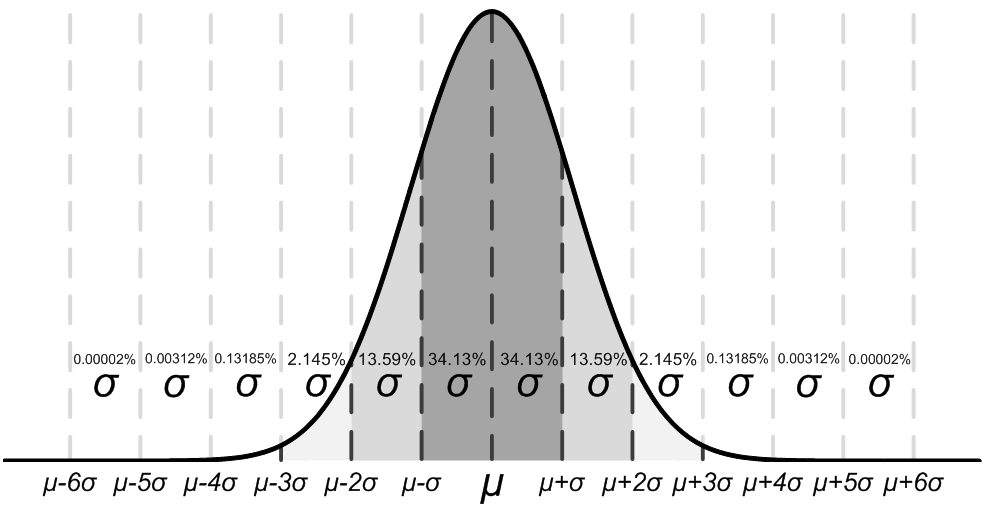ZHCSLB1F april 2020 – march 2023 OPA205 , OPA2205 , OPA4205
PRODMIX
- 1 特性
- 2 应用
- 3 说明
- 4 Revision History
- 5 Pin Configuration and Functions
- 6 Specifications
- 7 Parameter Measurement Information
- 8 Detailed Description
- 9 Application and Implementation
- 10Device and Documentation Support
- 11Mechanical, Packaging, and Orderable Information
7.1 Typical Specifications and Distributions
To design a more robust circuit, designers often have questions about a typical specification of an amplifier. As a result of natural variations in process technology and manufacturing procedures, every specification of an amplifier exhibits some amount of deviation from the ideal value, such as the input bias current of an amplifier. These deviations often follow Gaussian (bell curve), or normal distributions. Circuit designers can leverage this information to guard-band their system, even when there is no minimum or maximum specification in the Electrical Characteristics.
 Figure 7-1 Ideal Gaussian
Distribution
Figure 7-1 Ideal Gaussian
DistributionFigure 7-1 shows an example distribution, where µ, is the mean of the distribution, and where σ, or sigma, is the standard deviation of a system. For a specification that exhibits this kind of distribution, approximately two-thirds (68.26%) of all units can be expected to have a value within one standard deviation, or one sigma, of the mean (from µ – σ to µ + σ).
Depending on the specification, values listed in the typical column of Electrical Characteristics are represented in different ways. As a general guideline, if a specification naturally has a nonzero mean (for example, gain bandwidth), then the typical value is equal to the mean (µ). However, if a specification naturally has a mean near zero (for example, input bias current), then the typical value is equal to the mean plus one standard deviation (µ + σ) to most accurately represent the typical value.
Use this chart to calculate the approximate probability of a specification in a unit. For example, the OPAx205 typical input bias current is ±0.1 nA; therefore, 68.2% of all devices are expected to have an input bias from ±0.1 nA. At 4σ, 99.9937% of the distribution has an input bias less than ±0.28 nA, which means that 0.0063% of the population is outside of these limits, and corresponds to approximately 1 in 15,873 units.
Units that are found to exceed any tested minimum or maximum specifications are removed from production material. For example, the OPAx205 have a maximum input bias of ±0.5 nA at 25°C. Although this value corresponds to approximately 6σ (approximately 1 in 500 million units), TI removes any unit with a larger input bias from production material.
For specifications with no value in the minimum or maximum column, consider selecting a sigma value of sufficient guard band for your application, and design worst-case conditions using this value. Use this information to only estimate the performance of a device.